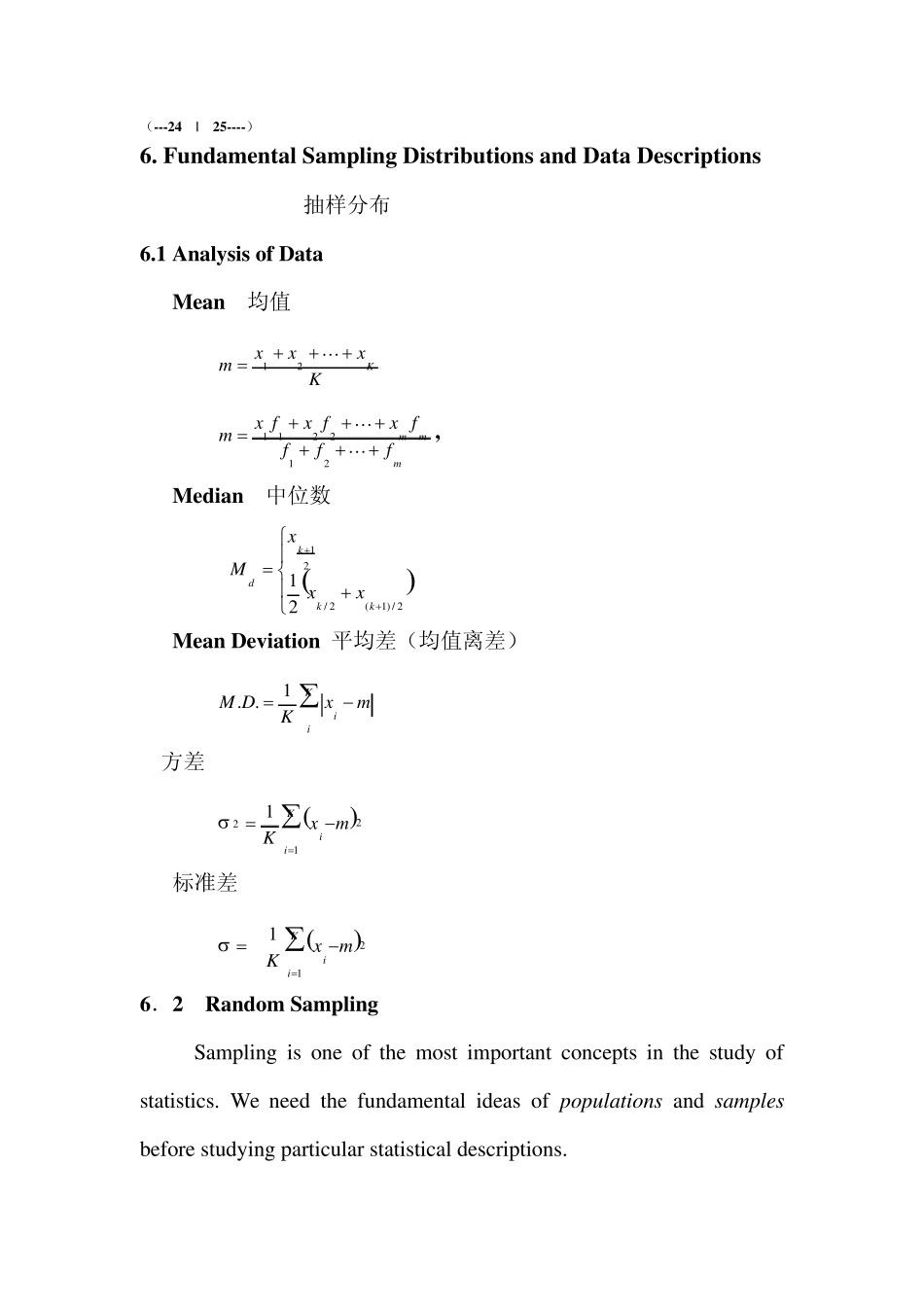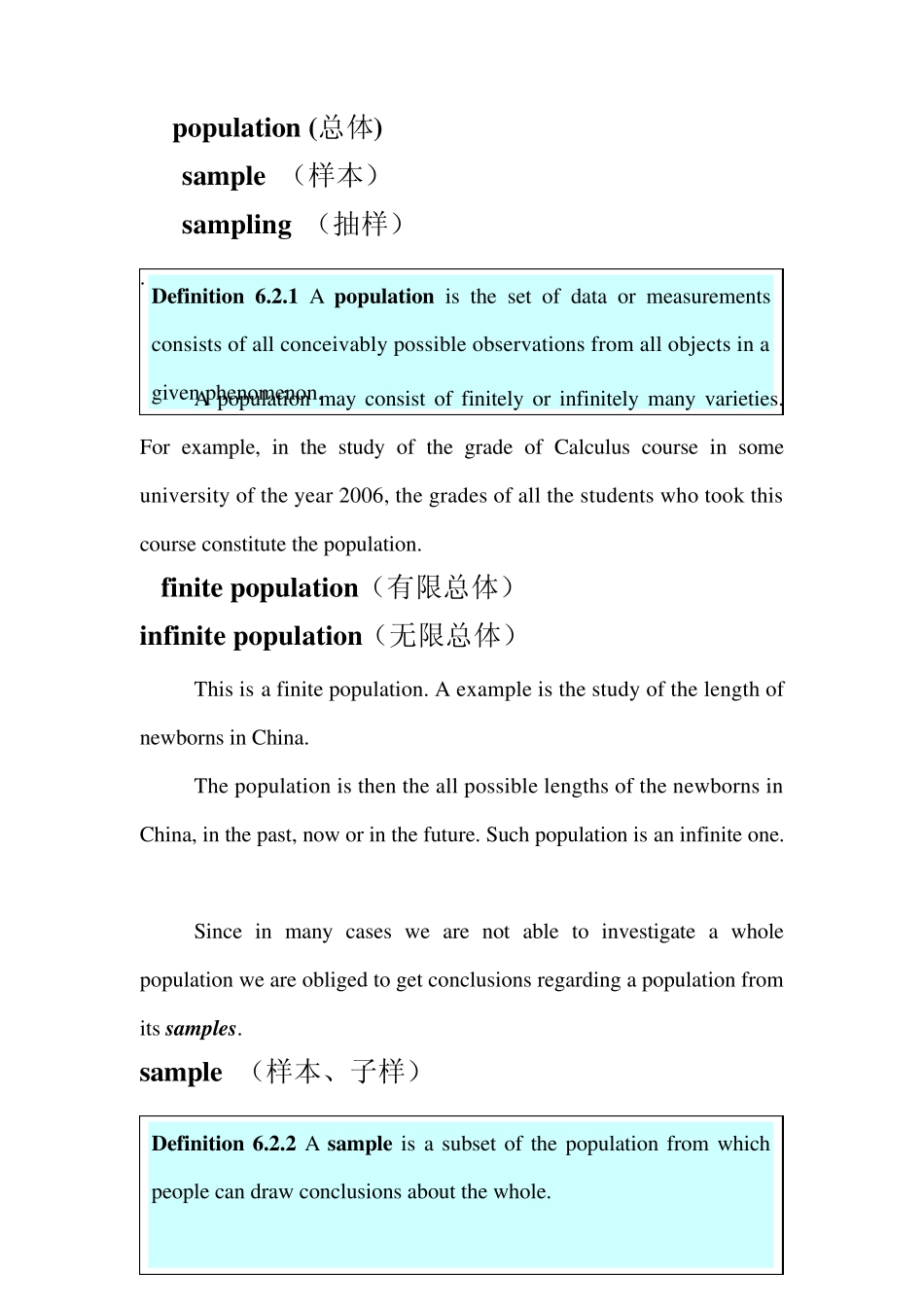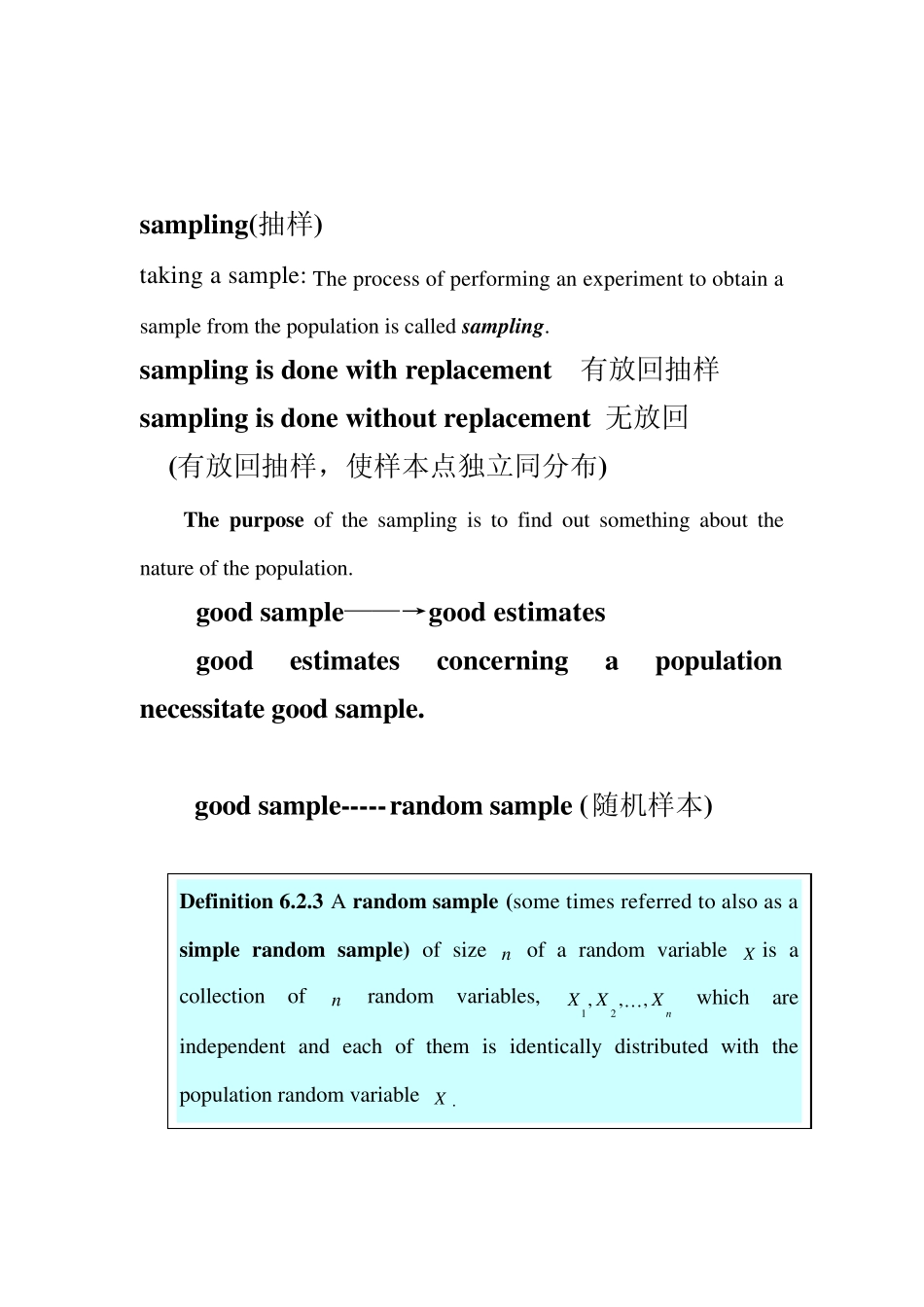(---24 | 25----) 6. Fundamental Sampling Distributions and Data Descriptions 抽样分布 6.1 Analysis of Data Mean 均值 KxxxmK21 mmmffffxfxfxm212211, Median 中位数 2/)1(2/2121kkkdxxxM Mean Deviation 平均差(均值离差) KiimxKDM1.. 方差 Kii mxK1221 标准差 Kii mxK121 6.2 Random Sampling Sampling is one of the most important concepts in the stu dy of statistics. We need the fu ndamental ideas of populations and samples before stu dy ing particu lar statistical descriptions. popu lation (总体) sample (样本) sampling (抽样) . A population may consist of finitely or infinitely many varieties. For example, in the study of the grade of Calculus course in some university of the year 2006, the grades of all the students who took this course constitute the population. a finite popu lation(有限总体) infinite popu lation(无限总体) This is a finite population. A example is the study of the length of newborns in China. The population is then the all possible lengths of the newborns in China, in the past, now or in the future. Such population is an infinite one. Since in many cases we are not able to investigate a whole population we are obliged to get conclusions regarding a population from its samples. sample (样本、子样) Definition 6.2.2 A sample is a subset of the population from which people can draw conclusions about the whole. Definition 6.2.1 A popu lation is the set of data or measurements consists of all conceivably possible observations from all objects in a given phenomenon. sampling(抽样) taking a sample: The process of performing an experiment to obtain a sample from the population is called sampling. sampling is done...


